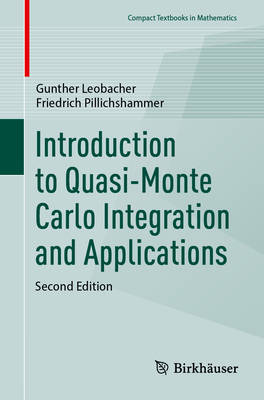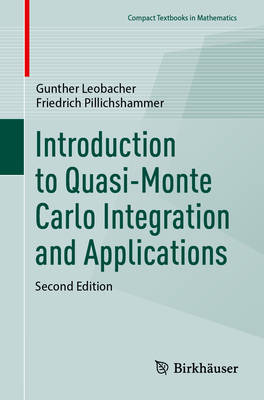
- Afhalen na 1 uur in een winkel met voorraad
- Gratis thuislevering in België vanaf € 30
- Ruim aanbod met 7 miljoen producten
- Afhalen na 1 uur in een winkel met voorraad
- Gratis thuislevering in België vanaf € 30
- Ruim aanbod met 7 miljoen producten
Introduction to Quasi-Monte Carlo Integration and Applications
Gunther Leobacher, Friedrich Pillichshammer
€ 83,95
+ 167 punten
Uitvoering
Omschrijving
This textbook offers a comprehensive introduction to quasi-Monte Carlo methods and several of their applications. Throughout, the authors use modern concepts and notations to provide an overview of how the theory behind quasi-Monte Carlo methods developed. While the main focus of this text is on the theory, it also explores several applications with a particular emphasis on financial problems. This second edition contains substantial revisions and additions, including several new sections that more thoroughly cover weighted problems. New sections include coverage of the weighted Koksma-Hlawka inequality, weighted discrepancy of lattice point sets and tractability properties, polynomial lattice point sets, and more. In addition, the authors have corrected minor errors from the first edition and updated the bibliography and "Further reading" sections. Introduction to Quasi-Monte Carlo Integration and Applications is suitable for advanced undergraduate students in mathematics and computer science. Readers should possess a basic knowledge of algebra, calculus, linear algebra, and probability theory. It may also be used for self-study or as a reference for researchers interested in the area.
Specificaties
Betrokkenen
- Auteur(s):
- Uitgeverij:
Inhoud
- Aantal bladzijden:
- 236
- Taal:
- Engels
- Reeks:
Eigenschappen
- Productcode (EAN):
- 9783032054456
- Verschijningsdatum:
- 8/12/2025
- Uitvoering:
- Paperback
- Formaat:
- Trade paperback (VS)
- Afmetingen:
- 155 mm x 235 mm

Alleen bij Standaard Boekhandel
+ 167 punten op je klantenkaart van Standaard Boekhandel
Beoordelingen
We publiceren alleen reviews die voldoen aan de voorwaarden voor reviews. Bekijk onze voorwaarden voor reviews.










